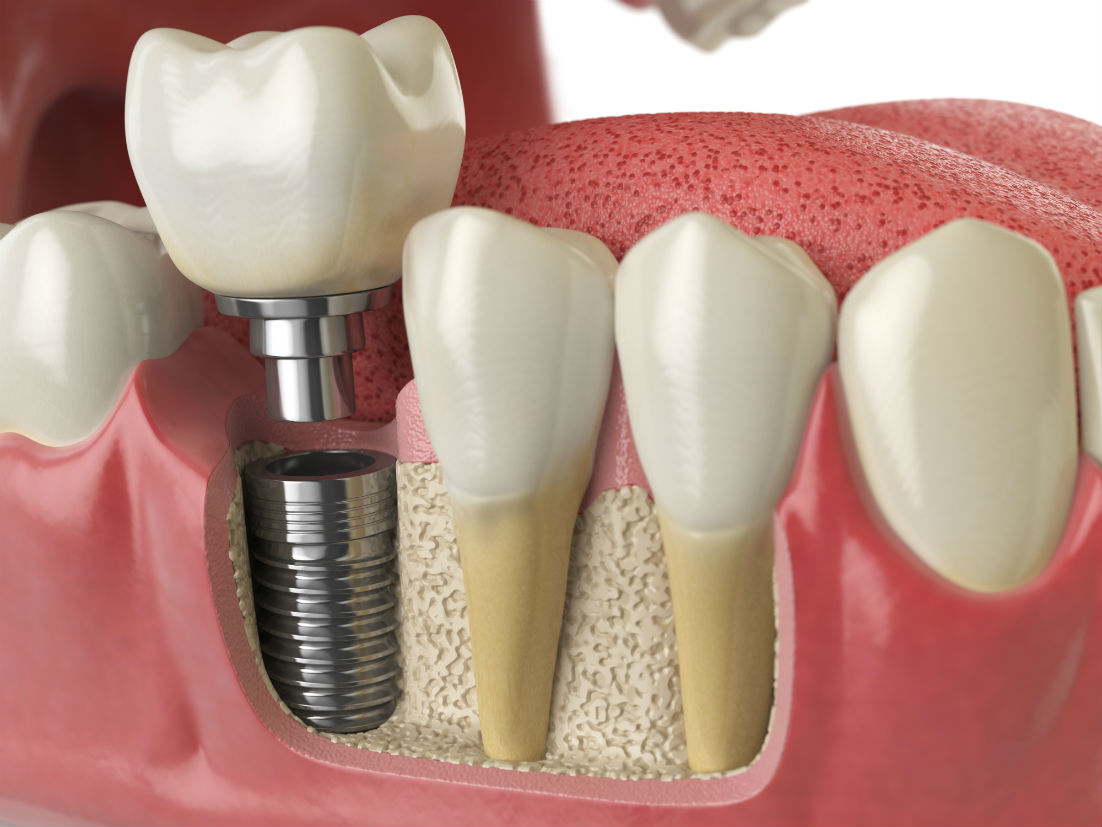
The only permanent solution to tooth loss, dental implants have gained favor as the preferred method for tooth replacement. Not only do today’s implants restore function, but, just as importantly, they also fulfill patients’ esthetic expectations.
What exactly are dental implants?
Dental implants are essentially artificial tooth roots that create a strong foundation for artificial teeth known as crowns. Crowns are custom-made to fit a patient’s mouth and match their natural teeth. Many dentists and patients prefer dental implants because they offer the same function as natural teeth and also help prevent bone atrophy in the jaw. They can be used to replace a single missing or damaged tooth or to restore an entire smile.
Understanding the Parts of a Dental Implant
Dental implants are an investment, albeit a life-changing one, and it’s important for patients to understand the components of an implant and how they work together.
At their core, dental implants are fairly straightforward and typically consist of three parts – the implant post, abutment, and restoration (also referred to as the crown). The implant post and abutment are central to every case, while there are multiple restoration options.
Implant Post – This piece replicates the function of a tooth root, designed to hold the restoration in place and stimulate the jawbone to prevent deterioration. The actual posts are small titanium screws that are surgically embedded through the gums and into the jawbone. Depending on the number of implants needed, some patients may require more than one implant post to properly secure the restoration.
This initial phase is the most time-consuming, as it requires several months for osseointegration to take place. Osseointegration is a natural process during which a patient’s jawbone heals the area around an implant post. This creates a powerful bond that mimics the natural bond between tooth roots and the jawbone. Once osseointegration is complete, the abutment can be placed.
Abutment – Although, for the most part, this piece isn’t visible, abutments are crucial for connecting the implant post to the restoration. The abutment rests on the implant post and sits above the gum line in the mouth. It consists of an attachment that joins the dental implant to the restoration.
This procedure is less invasive than the dental post implantation; however, it does require your surgeon to reopen your gum to expose the dental implant. They will attach the abutment and close your gum tissue around it. It generally takes about two weeks for your gums to heal, after which new impressions will be taken of your mouth and teeth. These are the impressions will be used to make your final crown.
Depending on your specific situation, a fixed or removable crown or a combination of the two will be recommended. A removable crown snaps into place and can be taken out for cleaning and repair. A fixed crown attaches to the abutment with a screw or cement and is not removable.
Restoration – This component is what most people associate with a dental implant, as it’s the part that is always visible. There are three types of restorations, and your surgeon will make a recommendation based on the number of missing teeth and your individual circumstance.
Dental Crown – Frequently used when replacing a single tooth, dental crowns are tooth-shaped, colored prosthetics that mirror your natural teeth’s function and aesthetics. The crown is cemented on top of the abutment and will allow patients to bite, chew, and speak clearly. Dental crowns are designed to blend in with your existing smile seamlessly.
Dental Bridge – An implanted-supported bridge is generally used when a patient has multiple missing teeth in a row but doesn’t necessarily need dentures. Unlike a traditional bridge, which attaches to the surrounding teeth, an implant-supported bridge is connected to an implant post and abutment to span the gap of missing teeth.
Implant-Supported Denture – Patients who currently wear dentures or need to have most of their teeth removed are good candidates for implant-supported dentures. By retrofitting a denture prosthesis to support implants, patients can enjoy a secure, comfortable smile. The dentures act as a full mouth of new teeth, and the implants provide security to prevent slipping and improve bite strength and comfort, allowing patients to eat their favorite foods with confidence.
Schedule a Consultation
While dental implants are not uncommon, it’s understandable to be nervous about the process. Knowing what to expect ahead of time can help ease your anxiety. Don’t hesitate to schedule a consultation with our experienced dental team.

 (215) 637-7474
(215) 637-7474 APpointments
APpointments